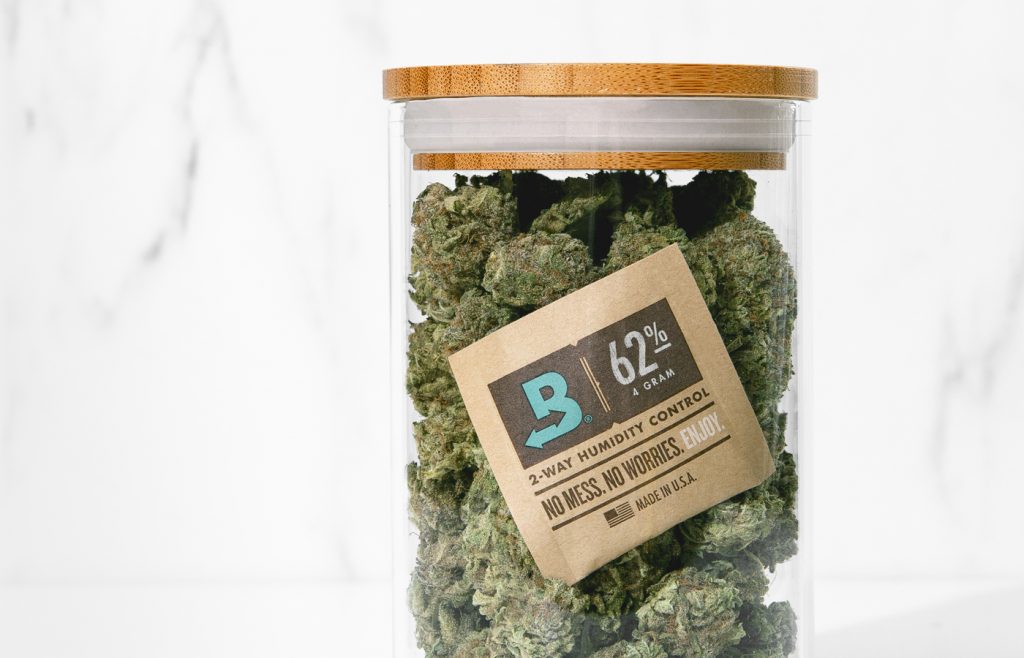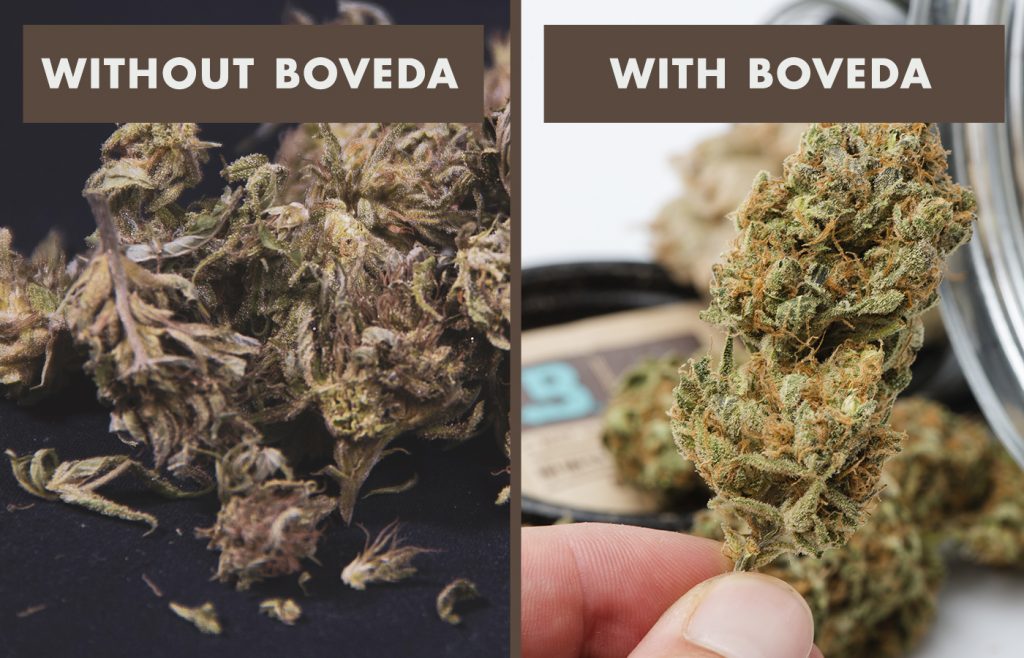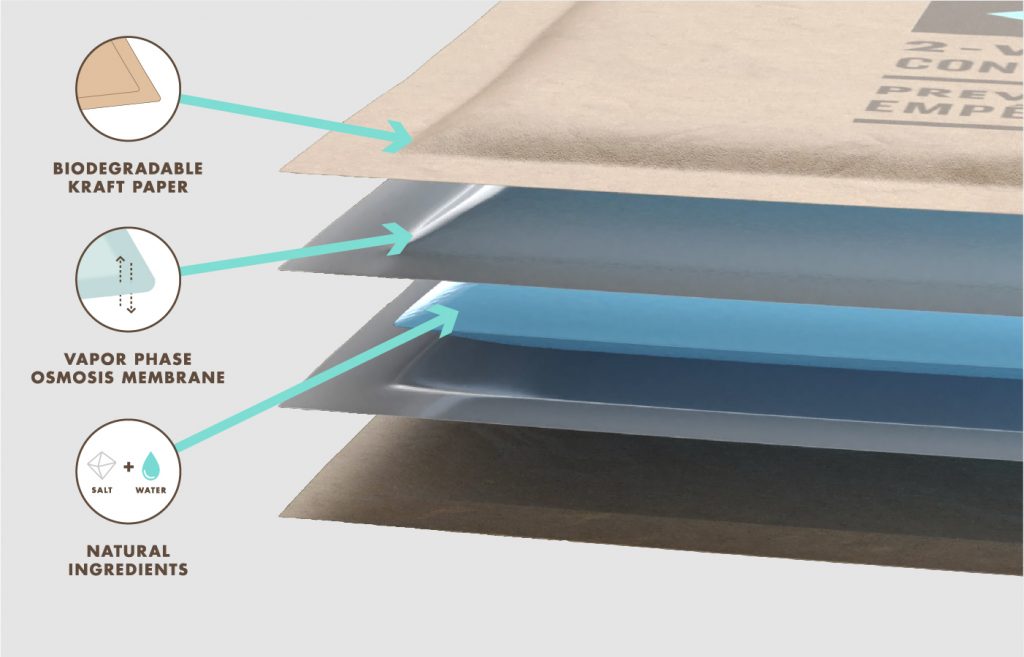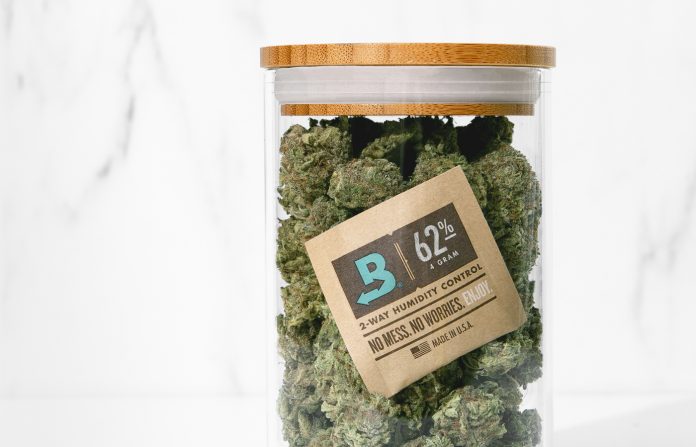Looking for a way to drive long-term growth? Start by looking in your own totes. There’s a profitable opportunity there when you integrate moisture control in with your stored flower. Smart growers are recognizing how important moisture is to protect the quality of cannabis post cure.
Flower is most vulnerable when its stored and transported—when it leaves the hands of the cultivator who painstakingly preserved its quality. The equilibrium of flower’s water content can be disrupted very quickly. Without proper humidity control while in storage, cannabis immediately begins to degrade, even when that flower is in airtight containers, like bins, bags and totes. And degraded flower sells for less and can land you in the bottom-tier of producers.
What’s happening inside your bins?
When left unprotected, even for a short time, flower is exposed to moisture fluctuations that impact its value and efficacy. Too little moisture causes cannabis to dry out, resulting in significant losses in weight and key chemical components, such as cannabinoids and terpenes. With fewer terpenes, cannabis delivers a compromised experience for consumers.
Unprotected flower:
- Loses terpenes, which signals the permanent degradation of potency.
- Loses water weight, which adversely affects how much each gram is worth.
- Delivers a less-than-perfect experience, which can negatively affect a cannabis company’s reputation and future sales.
Flower starts to degrade immediately if producers don’t prevent moisture loss. Considering before sale or consumption, it’s not uncommon for cured cannabis to be stored for two months or longer. So that’s 60+ days of letting the environment control what happens to precious inventory.
And the environment inside the bin isn’t kind to unprotected flower. By the time flower reaches the end consumer, most cannabis sold in regulated environments in the U.S. and Canada is far too dry, according to a 2018 product analysis conducted by Boveda, the global leader in 2-way humidity control for moisture sensitive products, including cannabis.
Most flower is stored too dry
The results of the third-party testing showed that of 72 cannabis samples purchased across five state markets, 67% of samples were below the optimum RH range (55-65%). And of those flower samples that tested within the target RH range, multiple samples were teetering on the cusp of the lowest optimal RH threshold.
What RH is right for dried flower?
ASTM International Cannabis Standards recommend all cannabis flower stay at a water activity level (aW) between 0.55 and 0.65%. Producers can achieve this by maintaining a 55% to 65% relative humidity (RH) range in cannabis containers—from cure to consumption.
So why do must growers throw caution to the air when dried flower is in storage? Sin of omission. Many producers still falsely believe that as long as product gets to market as quickly as possible, moisture levels can “hold their own”.
This gamble can be risky. Remember most flower is stored without moisture control for 2 months, or longer. And when moisture level takes a nosedive, it jeopardizes precious trichomes and terpenes.
“Getting cannabis to the right RH level and keeping it there can be a challenge without the right tool,” Brian Rice, Director of Research Development at Boveda, said.
How to get to the right RH level and stay there, easily and affordably
So, what’s the right tool to stop flower’s water content from fluctuating to unsafe levels? Store flower with salt-based solutions, according to an ASTM recommendation.
For growers, that means including salt-based humidity control packets with all dried cannabis. Unlike any other product, Boveda takes flower to a precise level needed to create a monolayer of purified water molecules. Boveda’s saltwater solution creates this monolayer shield that naturally coats the trichomes, preventing the degradation of THC and other cannabinoids.

Using Boveda, the original terpene, producers prevent the evaporation of precious terpenes everywhere flower’s stored or packaged and stored—from cure to consumption. The terpenes protected by a monolayer of moisture are released when ground, not lost and wasted to evaporation.

Moisture control pays you Back threefold
At about $5 a packet to protect a pound of cannabis, the outlay for Boveda is affordable insurance. After all, achieving and maintaining the right amount of moisture that surrounds flower post cure:
- Preserves terpenes
- Keeps weight on
- Protects against mold growth
How fast you can reach the right RH
As soon as you put Boveda in a bin with dried cannabis, the humidity packet starts releasing water vapor immediately if the RH is below 58% RH. In just 3 days, Boveda can bring the air inside a cannabis container or package up to the right RH. Because buds are dense, it takes them more time to absorb the pure water vapor that Boveda releases. Within just 7 days, the flower inside the container or package will reach the ideal RH level with Boveda. And that level will stay that way because 2-way design automatically adds and remove water vapor as needed to maintain that safe RH level.

How moisture affects your bottom line
Because cannabis flower needs to be dried and cured after cultivation, some cultivators, processors and packagers keep flower below a particular humidity “ceiling” but neglect to ensure flower stays above a certain “floor.” Overdrying directly affects the bottom line—much more than many cultivators realize.
For example: if 1,000 pounds of cannabis is 5% RH below the optimal threshold, that equates to a loss of six pounds (2,721.6 grams). If that flower sells for $5 per gram wholesale, that works out to $13,607 in lost revenue.
Even within that optimal RH range where cannabis flower realizes its full potential, there are still tens of thousands of dollars to be gained from precisely maintained RH. Additionally, cannabis in the optimal humidity range maximizes all the qualities that attract and retain customers.
The heavier the yield, the higher the market value. The better the quality, the better the experience for consumers. And pleased consumers come back for more again and again.
So are your totes preserving the life of your flower with Boveda inside or leading to an unprofitable death with nothing at all?










